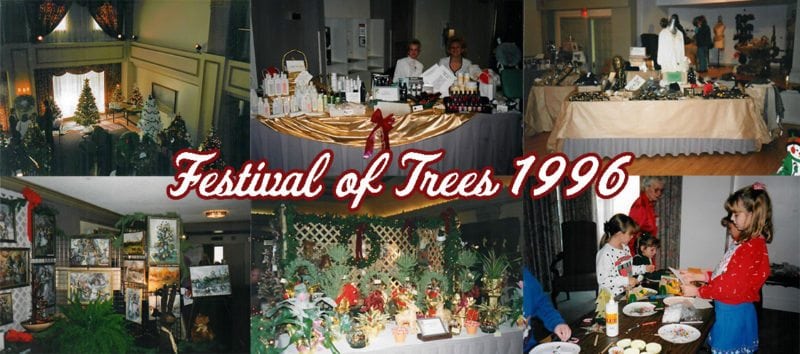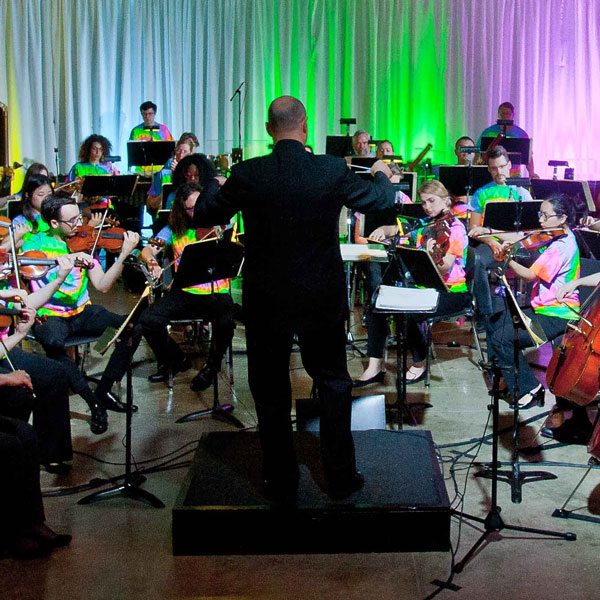This is blog 1 of 3 describing the behind-the-scenes details of the RSO’s signature events!
Click here for blog 2: “My Approach to Special Events”
Click here for blog 3: “Bringing Out a Theme”
I came to Richmond 30 years ago, and immediately became involved with the RSO. My neighbor, Jeanne Rush (owner of the Secret Ingredient), said “I have the event for you!” and got me involved with the Festival of Trees committee. The Festival of Trees was one of two events the RSO held every year at that time, the Festival of Trees in December, and the Signature Event in the spring. (It wasn’t called a Signature Event at that time—that was coined by Connie Woolridge when she was president. It was just the “June event” or the “April event”.) Those events changed and morphed over the years, including having both at the same time as one big event. From 1999-2006 we also had the Legends series, with performances by Aretha Franklin, Ray Charles, Bill Cosby, Beach Boys, Charlie Daniels Band, Ray Sedaka, and Wynonna Judd.

Back then, there was no fundraising arm to the RSO at all—they had the Richmond Symphony League (RSL), a group of women who sold the season tickets and planned the events. The RSL dissolved after I was on it for 3 years. By then, I was chair of the RSL, and I had an ex officio seat on the board to report on activity. So we morphed to the fundraising arm of the board when it shifted, and the RSL became the special events committee.
For the first 30 years or so, these events were held at Forest Hills Country Club. At my first event, the tickets were $15—and in our notes from it, we realized we needed to include more food. We had only served pretzels, and so people were getting too drunk! The orchestra wasn’t a part of it to start—in the fundraising world, the auction is the entertainment. Community vendors and merchants were always very generous with donated items. We always had a car, donated by Chuck Welling—it would sit outside the club. We always had a trip—places like Paris, or San Francisco. We’d also have different experiences—once we offered a designed birthday party, another time a cocktail party for 25 people. We’d have a few pieces of sports memorabilia, and some art, but not a lot—that was more of Art to Heart’s thing—and of course, season tickets!
We’d start the event with silent auction bidding on items valued at $200 or less; then, after dinner, would have the live auction for the bigger items. Back then, it was fun. It would take forever—we’d have 40 items, and everyone would bid. People got into it, they tried to outbid their friends—they don’t do that now, at least in this area. We had a professional auctioneer until the last 10 years. These events typically raised about $18–20k.
About 5 years after I started on the committee, I started doing themes to help organize my thoughts toward the event. At first, it was just with the invitation, then it grew into how we decorate for the event. Sometimes it affected entertainment—for a Las Vegas theme, we had Elvis and Frank Sinatra, and we’d have a DJ on occasion—but it was never the focus of the evening.
The biggest thing was when I started my business—Franklin-Brown—with Carol McKey—we did weddings, non-profit events. As I grew that direction, I saw that you can’t just throw a title out there, you have to go through every detail. That’s what spurred my growth as well. Art to Heart, which I’ve done for 22 years now, helped evolve me too, because they would let me do anything I wanted.
The “Four Seasons” in 2009 was the first time we had the orchestra, and the themes from this point really drove the choice of the music. We followed that with “Water Music”—complete with a storm outside—and “A Baroque Bouquet”, which was the first year we switched to the need-based auction instead of auctioning donated items. Between 150–175 people typically attended these events at Forest Hills; “Four Seasons” might have been closer to 200; often the number of people was driven by what music we played.
We left Forest Hills for Leland the next year, with “Bubbles, Bites and Bach”—champagne, hors d’ouevres, and Bach’s music. We had the orchestra performance and auction in the lobby area, then went to the ballroom for dinner and dancing. Jeff Jackson and Carol McKey did the auctioneering that year. Next, we went to IU East for “Under the Big Top”—we had a tent outside, but it rained, so all got moved to inside Whitewater Lobby. With the circus performers and carnival music, we raised about $25,000 that year. Polka and Dots was my first event working with our ED Monica Koechlein, and she’s a great partner for details. That event was at the Richmond Columbian Properties building—it was a smaller venue, so we only had around 150 people.
The ideas for 2015’s Boogie Woogie Ball came from the venue. Guy suggested trying out an airport hangar; Monica called the Richmond airport and they were game. The setting, plus the 70th anniversary of the end of World War II, inspired the theme. It ended up rainy and cold, but everything else was GREAT—the USO, Rosie the Riveter, and Tiki Bar decorations; Garry Kleer, our current board president as the auctioneer; and the orchestra and RSO Singers performing music from our armed forces and, of course, swing music. We had 275 in attendance, which we could fit in the bigger space. Why so many? The unique location? The music? Patriotism? Veterans could go for free? Whatever the reason, it was the most heartfelt event we’d ever done.
Alan Spears suggested doing the 50s after the success of the 40s, which brought the idea of creating an arc of 40s-50s-60s that timed with the 60th anniversary of the RSO. This led to 2016’s “Shake, Rattle and Roll”. Finding the location was difficult. The Sports Plex was daunting with the size, but I had a vision, and Monica and Tara were right there with me. This was the first time having Wetzel Auto on board—each dealership was like a drive in restaurant, and they let us borrow all the furniture we could possibly use. The music was tricky to sort out. We really needed a vocalist for 1950s music, and we decided on Elvis. He took awhile to find—Guy made sure he would fit, do well with the orchestra. We had 379 people at that event. For this year’s “Twist and Shout” at the Kuhlman Center, I wanted 600—I always shoot for a high number!—and we had 410.
Some of those original women from the Richmond Symphony League are still involved with the Special Events Committee. Others joined while being on the board and then stayed on the committee. I also have what I call my “Legacy” Committee—some don’t come to meetings anymore, but they still come to set up the events. They see what needs to be done, and go do it. They’re the ones who see that you need champagne glasses and no one has done it, so they’re running out to get them, no questions asked. They never say “no”, and they are the heart and soul of these events.


